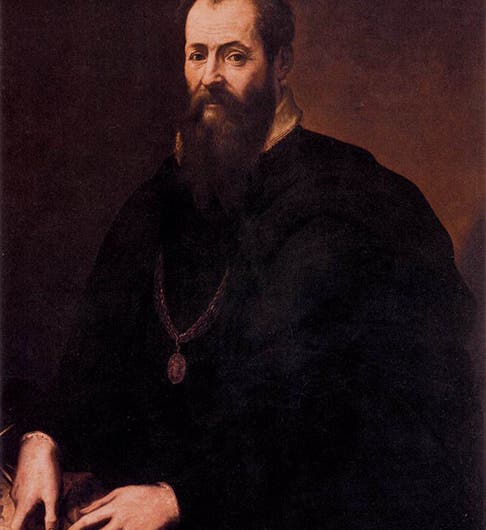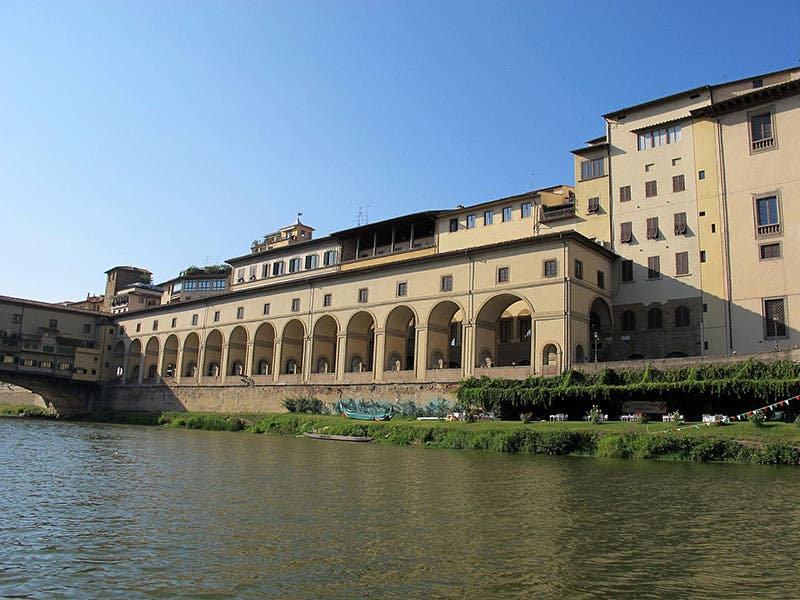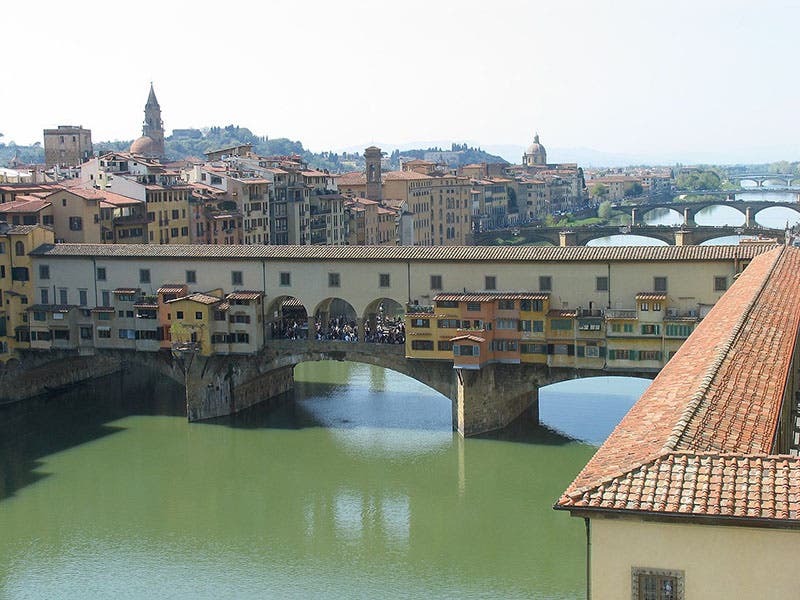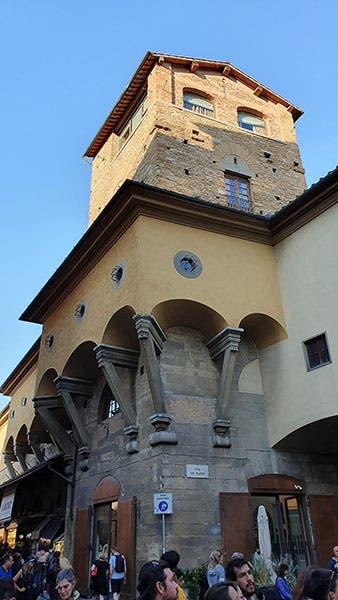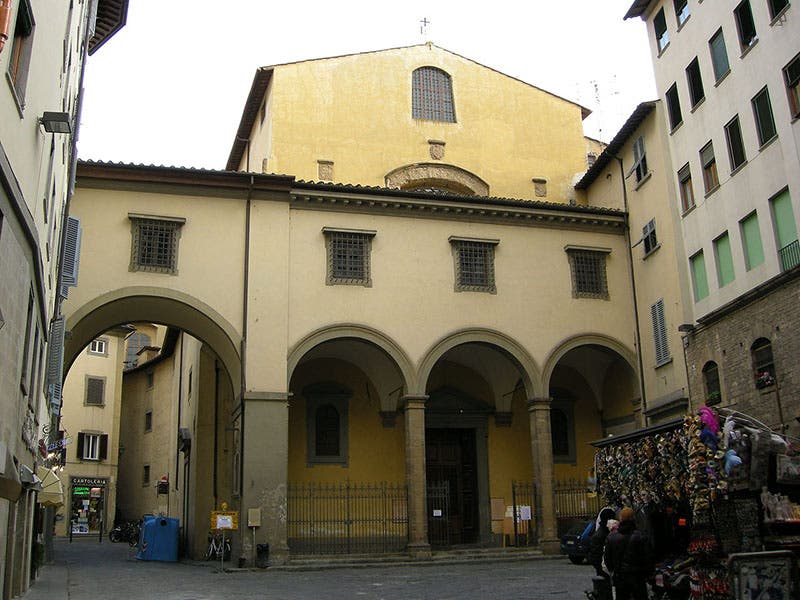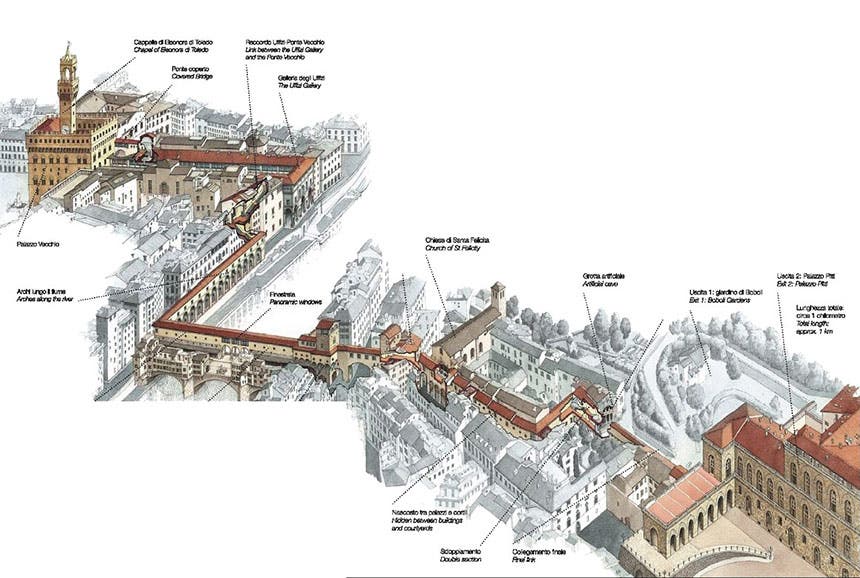Scientist of the Day - Giorgio Vasari
Giorgio Vasari, an Italian painter, historian, and architect, was born July 30, 1511, in Arezzo. If you took art history courses in college, you probably recall Vasari as the author of Lives of the Most Excellent Painters, one of our principal sources for biographical information on all manner of Renaissances artists and sculptors. But Vasari only occasionally figures in the history of science. When we talk about the development of linear perspective and its inventor, Filippo Brunelleschi, we often reproduce a portion of a fresco by Vasari that is in the Palazzo Vecchio in Florence, which portrays Brunelleschi, presenting his plans for the Basilica of San Lorenzo, to his patron, Cosimo “il Vecchio” de’ Medici. But Vasari was also an architect, and in these quarters, architecture qualifies as a science, since we consider it the good-looking older sister of civil engineering. The architectural contribution we wish to feature today is one missed by many visitors to Florence, who flit from the Piazza della Signoria to the Uffizi to the Boboli Gardens without taking it in, although it is right there in front of them all the way. We refer to the Vasari corridor.
The Medici family had its own palace in Florence, but when Cosimo I (a hundred years later than Cosimo il Vecchio) became the first Duke of Tuscany, he moved into the Palazzo Vecchio on the Piazza della Signoria (second image). This was about 1540. In 1549, Cosimo bought the Palazzo Pitti, across the Arno River, and after Vasari remodeled it, the Pitti Palace was used to house guests and host parties, and so Cosimo found himself spending a lot of time there. Since the Palazzo Vecchio was the civic center of Florence, Cosimo needed to go back and forth often, and he didn't relish travelling through the streets with the hoi polloi. So he asked Vasari to construct a private route between the two palaces. Vasari's solution was pleasing beyond all expectations.
First, VasarI built a short bridge between the Palazzo Vecchio and the Uffizi next door (third image above), and then a passage down the length of the Uffizi to its end, which sits right on the Arno River. From there, Vasari built an exterior enclosed corridor that sits on top of an arcade, and extended it to the Ponte Vecchio at the far left (fourth image, above). The Vasari corridor then crosses the Arno atop the Ponte Vecchio (fifth image, above), after which it snakes along the outside of various buildings, such a the Torre dei Mannelli (sixth image, below). It cuts right across the facade of the church of Santa Felicita (where Cosimo used to observe mass in private; seventh image, below), and then finally wends its way to the Boboli Gardens at the Pitti Palace. We add a diagram of the complete route of Vasari’s walkway (eighth image, below).
The Vasari corridor is a brilliant and attractive solution to what could have been a thorny problem, and Vasari deserves a lot more credit than he is often given for its design and elegant construction. The corridor was closed for centuries, but in the 1970s, it was opened to the public, and since the Uffizi is overflowing with paintings, they moved all their artists’ self-portraits into the Uffizi section of the corridor, making it as attractive inside as it was outside (ninth image, below). The corridor was closed in 2016 because of security and maintenance problems, but it is scheduled to reopen in 2022.
If you have your seatbelt on, you can take a fast trip through the entire length of the Vasari corridor in one minute, possible only because the corridor is closed and empty of people and paintings. But it sparkles with its new floor and fresh paint. The stretch where you see bay windows on the right is not original; Mussolini added the large windows to impress Hitler when he came to visit. I do not know if they will still be there after the remodeling. I hope not.
The self-portrait of Vasari (first image) is part of the Uffizi collection. Presumably, it was once on display in his corridor.
Dr. William B. Ashworth, Jr., Consultant for the History of Science, Linda Hall Library and Associate Professor emeritus, Department of History, University of Missouri-Kansas City. Comments or corrections are welcome; please direct to ashworthw@umkc.edu.

